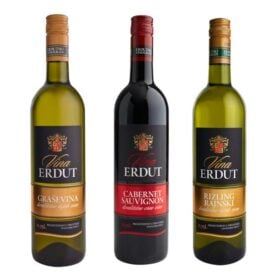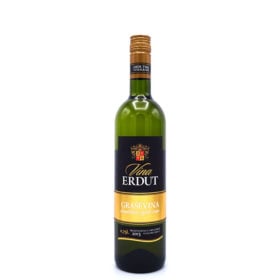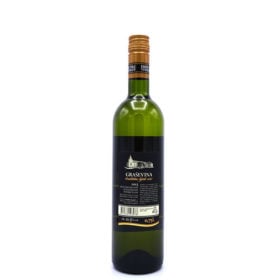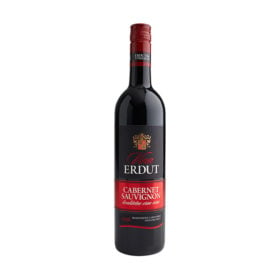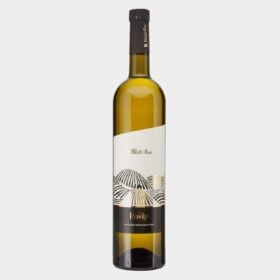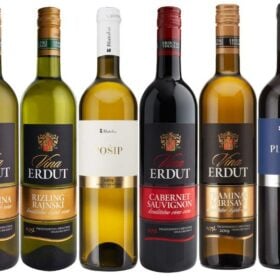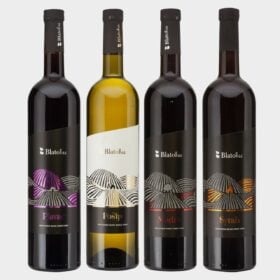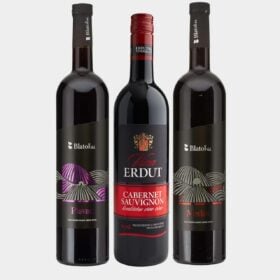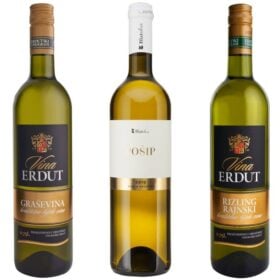After reading this wine guide you will have gained a first practical knowledge of the different types of wine and enough vocabulary to buy and open your first serious bottle. We are going to teach you how to drink wine as a beginner. And with this, as a beginner, you can also impress your date with your wine knowledge.
Content
Learning to drink wine as a beginner is intimidating
There are dozens of different types of wine, each with their own ideal dishes to match. And then there are wine candies – people who describe fermented grape juice as 'unctuous'.
Too bad, because both White wine as a Red wine is delicious. With a basic understanding of different types of wine and their taste, you can take an ordinary meal and make it extraordinary or turn an ordinary meeting place into something truly memorable. It is therefore a very good reason to learn more about different wines and how they taste.
Learning to drink wine begins by tasting and understanding wine
Studies have shown that more complex descriptions of red and White wine make those wines taste better. Intuitively this makes sense. If you have more vocabulary to describe what you perceive, your brain is better able to distinguish subtler flavors.
That's why we've put together a beginner's guide to different wine types that outlines the basics of what makes different wines different. We also cover the most important descriptions you need to know to get the most out of the wine you drink.
What is a Red wine en White wine?
Okay, you probably don't need help recognizing a White wine and an Red wine. They look and taste different for sure. But it's worth understanding why they look and taste so different. The culprit in both cases: the peel (skin) and a little something they bring to the party called tannins.
Remember the word tannin and what it means, because wine people talk a lot about tannins. In short, there is a lot to consider if you want to learn to drink wine as a beginner.
Tongue, meet tannins
What are tannins? Tannins are a naturally occurring substance in grapes and other fruits and plants (such as tea, for example). The taste of tannin It is often described as bitter, causing a dry, tight mouth feel. Tannins get into your wine when the vintner leaves the skins in the grape juice while it ferments.
This is also how wines get their color. Wines that have little or no skin contact turn pink or white and have much less tannins. Wines that ferment for a long time with the skins turn red with a high tannin content. As you can imagine, red grape skins have more tannins than white grape skins.
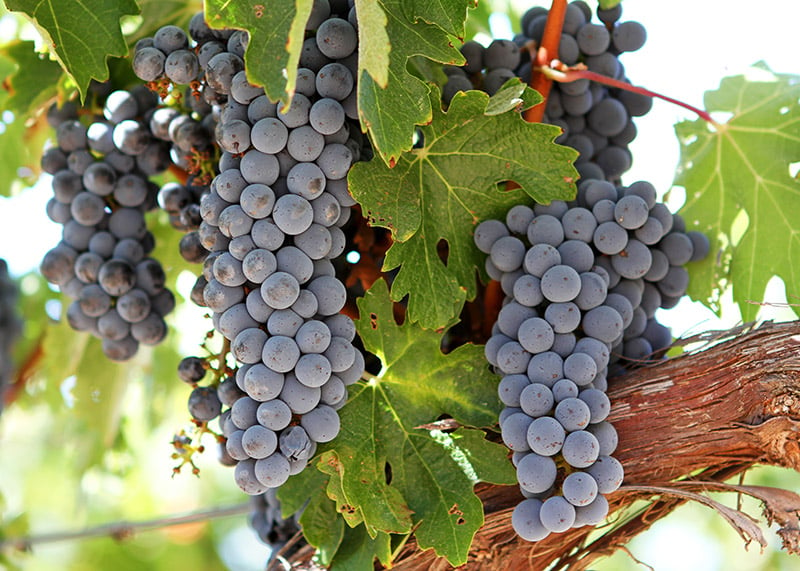
Fun fact: you can get a White wine get a red grape by immediately removing the skin from the juice. All the color comes from the peel. Even red grapes are white inside.
Tannins forms the backbone of Red wine, and that's why you should have a Red wine can be described as 'firm' or 'leathery' or simply 'bitter'. Tannins also indicates texture Red wine, making it feel “smooth” and “soft” or “rough” and “tough”. In general, the darker the wine, the more tannins it contains and how “brutal” the taste is.
Popular red wine varieties: Cabernet Sauvignon, Plavac Mali, Blaufränkisch, Zweigelt, Merlot, Pinot NoirCabernet Franc, Malbec, Barbera, Sangiovese
White wine and wine acids
White wine also contains tannin, but not enough to make a show of it. Instead, white wines have higher acidity. Therefore you could say that a wine is 'crisp' or 'sharp'. Or, if there isn't enough tartaric acid, you could use a White wine 'floppy' or 'flat'.
Popular white wine varieties: Chardonnay, Riesling, Grasevina, Posip, Sauvignon Blanc, Semillon, Moscato (Yellow Muscat), Pinot Grigio, Gewürztraminer
Soft rose wine
Rosé wine is pink in color. It becomes so because compared to Red wine may remain in contact with the red grape skins for a relatively short time. On the spectrum between red and white lies rose much closer to the light side, with relatively little tannins.
Popular rosé wine varieties: Pinot Noir, Plavac Mali and Sangiovese
why can i Red wine not serve cold?
There is no law against drinking chilled Red wine, but there's a pretty good reason why you shouldn't, and again, they're the tannins. Tannins tend to taste bitter when cold, meaning the darker reds don't taste best when iced.
On the other hand, white and rosé wines, with their low tannin content, taste fine when chilled, but make sure they don't get too cold or you'll miss a lot of the flavor. It is of course all a matter of taste. Some people enjoy their beer at room temperature and their pizza cold.
What is wine decanting?
Decanting wine means slowly pouring the wine from the bottle into another container, without disturbing the sediment at the bottom. Wine is often decanted into a glass vessel with an easy-to-pour neck. Examples include the swan, cornett, duck, and standard carafes, which come in small, medium, and large sizes.
Simply put, it means transferring (decanting) the contents of a wine bottle into another container (the carafe) before serving. It may sound weird. Because many wonder: how can pouring wine from one barrel into another make it taste better? But it works. Wine enthusiasts love to sit around for hours and debate the pros and cons of decanting wine. But we are convinced, based on our own experience with opening, decanting and tasting thousands of bottles of wine, that careful decanting can greatly improve the taste of wine.
How should you serve a decanted bottle of wine?
Even if your wine is now in a decanter, make sure to keep both the original bottle and the cork (or screw cap). When serving the wine to guests, place the original bottle and cork next to your crystal decanter. The label informs your guests of what they are drinking, while the cork is useful as a stopper in case you need to pour the wine back into the bottle and save it for later.
What is dessert wine and sparkling wine?
Red, white and rosé wines with an alcoholic strength by volume of 14% or less are considered "light wine". So these wines are often not sparkling or fortified (ie to which alcohol has been added).
Dessert wine gets its name because it tends to be sweeter and is often drunk after a meal. Usually, extra alcohol (often brandy) is added to a dessert wine so that it can retain more of its natural sugars. The sugars are often 'lost' during the fermentation process.
Popular dessert wines/fortified wines: Prošek (not to be confused with Prosecco), Port, Madeira, Vermouth, Sherry, Marsala
Sparkling wine is wine with significant carbonation, which can occur as a natural part of the fermentation process or through the addition of carbon dioxide after fermentation. When reading sparkling wine labels, you will also come across terms that indicate how sweet or how dry it is.
Sparkling wines from driest to sweetest: Brut Nature, Extra Brut, Brut, Extra Dry / Extra Sec / Extra Seco, Dry / Sec / Seco, Demi-Sec / Semi-seco and Doux / Sweet / Dulce.
Sparkling wine is made from a wide variety of red and white grapes. Champagne is made from Chardonnay, Pinot Meunier and/or Pinot Noir.
How to describe the taste of wine
In brief: Red wine is red because it was fermented with the skin, making it more tannin gets. White wine has less tannin and is more acidic. Dessert wines have a higher alcohol content and are usually sweeter, and sparkling wine has bubbles.
Easy right? Of course not. Stopping at red and white wines would be like ending a discussion about vehicles with cars and trucks. If we want to pair the kind of wine you like to drink, we need to get a little more specific. Yes, that means we need to talk about what a wine tastes like.
This is what wine drinkers often get lost in. There may be nothing more subjective to humanity than taste, and it seems like a disaster from the start to find common ground when it comes to wine. But despite the plethora of descriptions for wine you'll come across, there are a few terms that mean pretty much the same thing to everyone. Learning to drink wine as a beginner does not happen overnight.
What are the four main wine descriptions?
- sweetness. Needs no explanation. The opposite of sweet is dry. A wine can also be semi-dry or nearly dry (ie just a hint of sweetness).
- acidity. We've already talked about that. Acidity is a big problem for white wines, and it makes them refreshing and crisp (or “sour” if overdone). A lower acidity makes a wine taste 'fat'.
- Tannins. Another we have already covered. It's all about the tannins about this Red wine. Wines with a high tannin content give an astringent feeling in the mouth, perhaps even bitter and inky. Wines with a lower tannin are smooth and soft, and depending on your taste, more drinkable.
- body. This refers to the perceived "weight" and viscosity of the wine. A full-bodied wine feels thick and covers the sides of the glass as you swirl. A light wine is almost like water. A medium-bodied wine is somewhere in between.
- There is a fifth thing to keep in mind when describing wine: taste. Unlike the four main descriptions, taste is much more subjective. Taste of wine. If you're not sure, don't dive into descriptions like graphite, barnyard, and other flavors you've (hopefully) never tasted. Instead, stick to the most recognizable flavors such as fruity, earthy, spicy, smoky or floral.
Not sure which is which? Go to a wine tasting or simply ask the wine seller to explain the bottles of wine for sale. Say, “Give me something fruity and give me something earthy.” Or: “Give me a soft Red wine and a daring one Red wine.” Drinking them one after the other will give you a good feel for what these terms mean. We have all these different wines for sale, feel free to contact us.
In the wine world you will inevitably hear a lot of discussions about “oak”, “oak barrels” or “oak” or “an oak quality”. The oak flavor gives wine when it is fermented or aged in oak barrels. If you're a whiskey drinker, you already know how much of a big oak tree can be. In wine, oak is just another parameter of taste. Some say that oak adds such qualities as smokiness, cloves, spiciness or vanilla notes. Others just don't like oaky aromas. If that's you, go for a wine with a low oak character. Many wines are fermented and aged in stainless steel vats, so are not oak influenced at all (unless the winemaker adds oak notes afterwards).

Tip: Combine oak wines with salty dishes. Salt reduces the bitterness of oak in the same way that salt softens shots of tequila.
Which one should you buy as a beginner if you want to learn to drink wine?
It's best to start simple so you can isolate what you're tasting and what wine you like or don't like.
Start in the €5 to €15 price range. Most wines at this price are “typical” for their variety and region. Some say that complexity doesn't start until the $25 level or $35 level, but while you're still in the exploratory stage, it's better to save your wallet.
Again, it's hard for a novice to tell how a wine will taste based solely on the variety. So don't be shy to ask for help. It is best to ask the wine seller directly about the type of wine you want to try. Say: “I want a dry, light White wine” or “I want a full Red wine to attempt." Or you can even name wines that you have enjoyed in the past and ask for something similar.
Another good tactic is to ask for a "typical" variety, for example, "Find a typical one." Pinot Grigio for about €10′. Here's a quick overview to help you decide:
The Best White wine for beginners
- Pinot Grigio (aka Pinot Gris) – Simple, light, dry and crunchy.
- Grasevina – Fresh semi-dry white variety with a slightly pleasant aroma and a taste of honey and apple.
- Gewürztraminer – Very aromatic, aroma of flowers and notes of light peppers, often also a little sweet.
- Riesling – Can be both dry and sweet, often with intense fruit flavours. Much lighter than chardonnay.
- Yellow Muscat – Fruity and often sweet.
After that, if you are used to the taste of wine, you can start with a wine with a little more complexity.
- Posip – Pleasant ripe dry and soft taste and is very popular with real wine connoisseurs.
- Sauvignon blanc – Dry, tart and sour, with spicy flavors and tropical fruit.
- Chardonnay – Fruity, buttery, with a velvety feel that is atypical for dry white wines.
The Best Red wine for beginners
- Cabernet sauvignon – Full of flavor with spicy notes. The younger variety has rich aromas of berries and cherries.
- Merlot – Fruity, spicy. Very soft, less tannin and Cabernet Sauvignon.
- Pinot Noir – Delicate and fresh, very soft tannins with fruity aromas.
Once you've gotten used to the taste of Red wine you can take a spaje up again, you can then choose:
- Plavac Mali – Typically spicy, ranges from medium to full bodies and semi-dry to dry.
- Blaufränkisch – A distinctive taste of ripe berries and dark chocolate.
- Zweigelt – Recognizable, refined and smooth wine with a pronounced and appealing aroma of cherries.
What is the best wine? A few choices
Of course, choosing a real wine and making sure you get a decent bottle is a big barrier for everyone. We wondered: which wines are affordable, widely available and generally considered good?
It's a difficult question to answer, as annual variations in climate, grape quality, and a dozen other factors cause a wine's year-to-year quality to vary more than spirits. That said, some reliable wine choices where you get the most for your money are:
Easiest White wine to learn to drink for beginners
- Grasevina
- Posip
- Riesling
- Pinot Grigio
- Gewürztraminer
- Yellow Muscat
- Chardonnay
- Chenin blanc
- Sauvignon blanc
Easiest Red wine to learn to drink for beginners
Learn to drink wine as a beginner in 7 steps
A cool glass of wine can help enhance the flavor and make it more flavorful. Certain wines, such as white and sparkling varieties, are best served cold. Other wines, such as red wines, are best served at room temperature.
Adding an ice cube or even frozen fruit pieces will chill and dilute your wine. This can help you as a beginner to learn to drink wine and get used to the taste of wine. It's a rule of thumb, and definitely not set in stone, you'll have to learn for yourself what works best for you.
1. If you're not sure, start with a sweet wine
For those who are accustomed to drinking juice, soda or iced tea, it is best to start with a sweet wine and best a White wine with a lower alcohol content, to make the transition to wine as smooth as possible.
If you want to learn to drink wine as a beginner and are not used to alcohol and wine, you often tend to be 'turned off' by the strong, bitter flavors or the tannins which are present in many wines. Try something sweeter or low in alcohol if you're not sure.
Pinot Grigio, Yellow Nutmeg or one Gewürztraminer is the perfect wine for beginners who want to learn how to drink wine. A light wine with a light juice taste. Once you are used to this taste and structure, you can try drinking more full-bodied wine as a beginner.
2. Try at least five times
There are many types of wine – Red wine, White wine, rose, sparkling and dessert, for starters – and each of these suits different tastes.
For beginners, it is recommended to taste a particular type of wine at least five times. Whether it is wine from different brands, regions or brands, taste it more often to get used to the taste of wine. This is also because every bottle of wine has a different taste profile.
If you're one Merlot and you don't like it, that's probably not a good indicator. You have about four more to try. But if you still don't like it after that, try something else. You can use this as a rule of thumb as a beginner who is learning to drink wine.
3. Spin around, smell and drink
It is best to enjoy wine slowly by drinking it slowly. You can then taste more flavors than if you drink the glass of wine in one go. Swirl the glass slightly to release the aromas, then sniff the glass well. Also look at the color and take a sip of the wine.
When you taste the wine, look for the first taste on your tongue and then the aftertaste or lingering flavors. If the taste is still in your mouth after about 60 seconds, you have tasted a full and ripe wine. If this aftertaste lasts less, then it is a lighter wine that you tasted.

4. Let the rule of Red wine-Red meat / White wine-fish fall
Most people like red meat with Red wine and fish dishes with White wine, but those who don't should feel the pressure to do the same. There are no hard and fast rules when it comes to wine pairings, just suggestions. Everyone is different and everyone has a different preference for a certain taste. What one person likes, you don't have to like.
I have some friends who eat fish with Red wine. It's okay because that's what they want. We don't have to tell ourselves which wines we enjoy with dinner. Make your own match and be adventurous. As said it's just a suggestion.
5. Drink, serve wine at room temperature
Rather than pairings, novice wine drinkers should pay particular attention to temperature, as it can make or ruin one's experience.
Wine should not be served too cold or too warm, but at room temperature, or around 15 to 20 degrees Celsius. If you Red wine keep too long in the fridge pour into a glass hold the glass and the temperature of your hands will warm the wine. Then give it a little twist to release the aromas and better distribute the wine's structure.
6. Store wine: Cold, dark, undisturbed
For those who want to drink at home, temperature also plays an important role when it comes to storing wine at home. Here are some numbers to remember: 4 to 8 degrees Celsius for Red wine, 12 degrees for White wine.
If you don't have a wine fridge to keep your wine at home, find a pantry in the center of the house. Just look for a dark place that doesn't get constant light and doesn't have a lot of vibration. If the wine is directly exposed to sunlight or light, it can receive a temperature shock. That is why a constant temperature is important. In addition, it is also important to know that not all wines are intended to age.
Young wine is made for immediate enjoyment. These are wines ideal for novice wine drinkers who want to learn to drink wine. They are wines with little alcohol. These won't ripen fantastically either. You can keep them refrigerated and in a dark room at home for a few years, but don't expect them to last 10 years or more.
If you've bought a wine that you want to age for four to five years, don't turn it constantly. Put a sticker on it so you know what it is, and leave the wine. The temperature is important. You don't want it to fluctuate constantly. Make sure the corks don't leak, so check them regularly. Lay the wine flat to prevent oxygen from entering the bottle. This is especially important with bottles of wine that are closed with a cork.
If you want to age the wine to find out how the taste changes over time, that is also possible. It is then best to buy 12 wine bottles to taste them over a period of one year. This way you can see how the wine evolves. You will also find out how the wine will taste in two or three years.
7. Don't Drink Too Much
Drinking wine is supposed to be a fun activity. But some beginners who want to learn to drink wine tend to exaggerate in order to "get the most out of the experience".
Don't drink too much or you won't appreciate it. Drink responsible. You want wine to be fun. Something that benefits the occasion and not something that drags you down and makes you feel bad.
In addition, it is also important for beginners who want to learn to drink wine to drink plenty of water. This is also important if you are planning a wine tasting. It is very important to prevent dehydration, too much alcohol is not good for your body.
A short video in English explaining how to taste and learn to drink wine as a beginner
Learning to drink wine for beginners is a long process and takes a lot of time
The next month, take the time to buy a new bottle of wine a week (or have a glass with dinner or at a wine bar). Uncork and take a moment to taste and describe it using the descriptions above. Make sure to try a different type of wine each week and repeat the same process. By the end of the month, you'll begin to feel more comfortable with wine vocabulary, which can have a profound effect on your enjoyment.
In the end, you really can't make a wrong choice. As long as you pay attention to what you don't like about a wine, each new bottle will bring you closer to what you do like. Take it glass by glass and don't be afraid to give in if you can't quite put your finger on something. Concentrate on enjoying the wine – that's the whole point.
Do you remember the first glass (or box) of wine you really enjoyed? Share it in the comments below!


